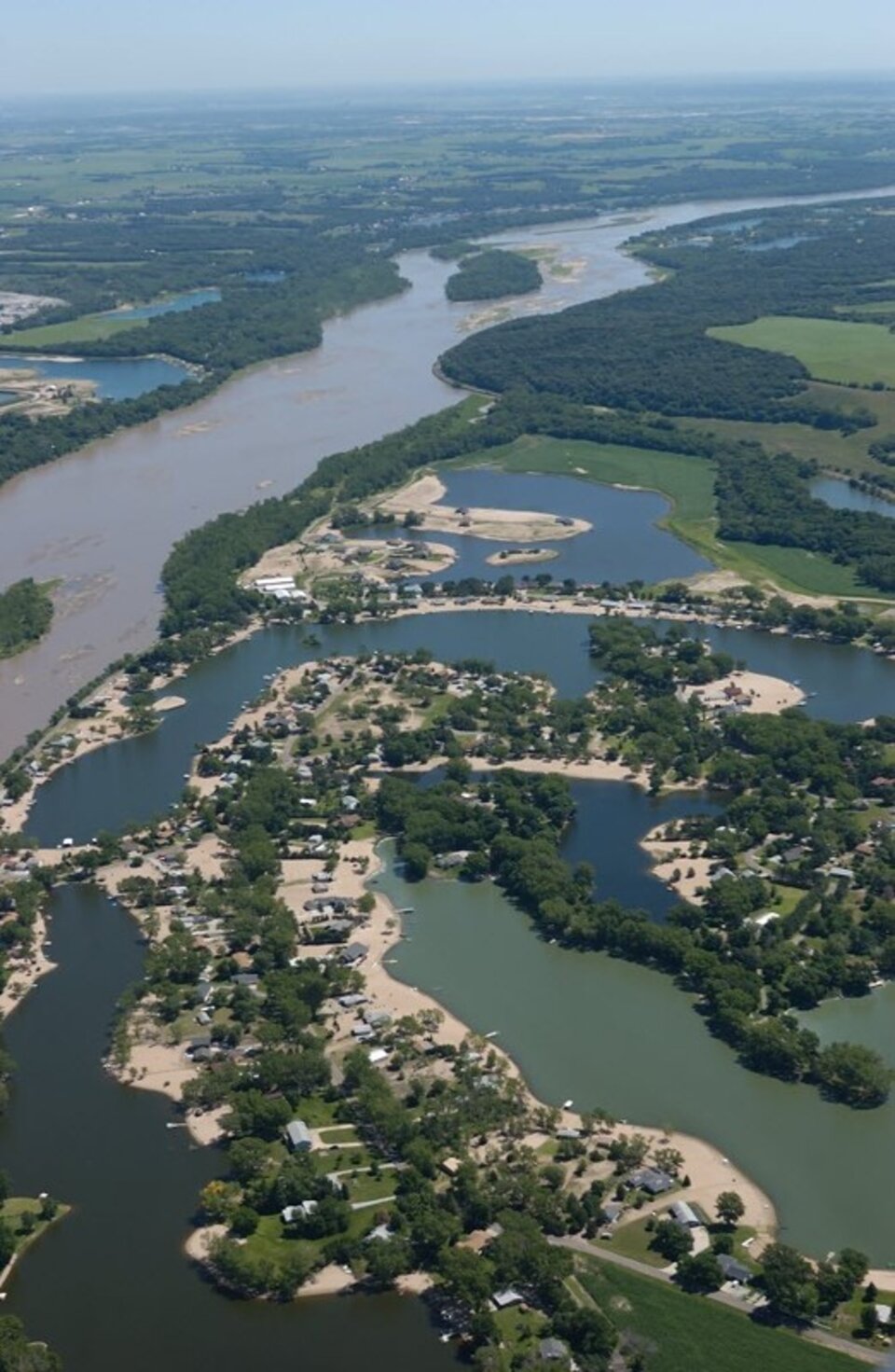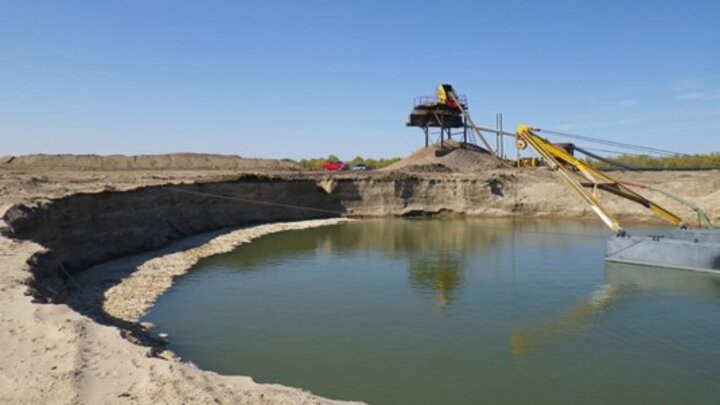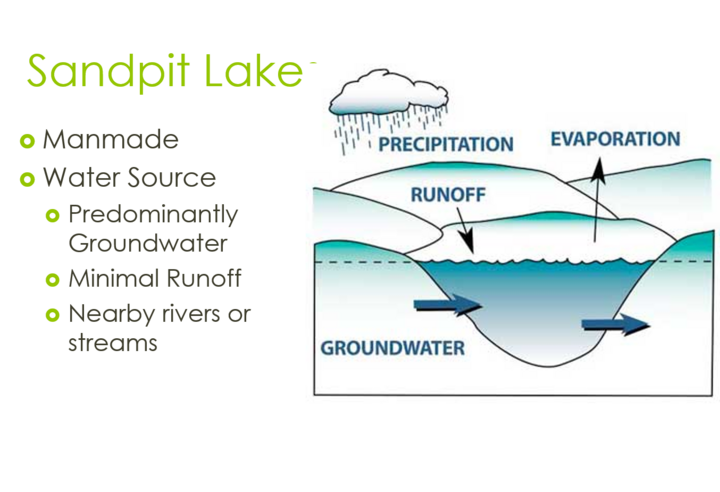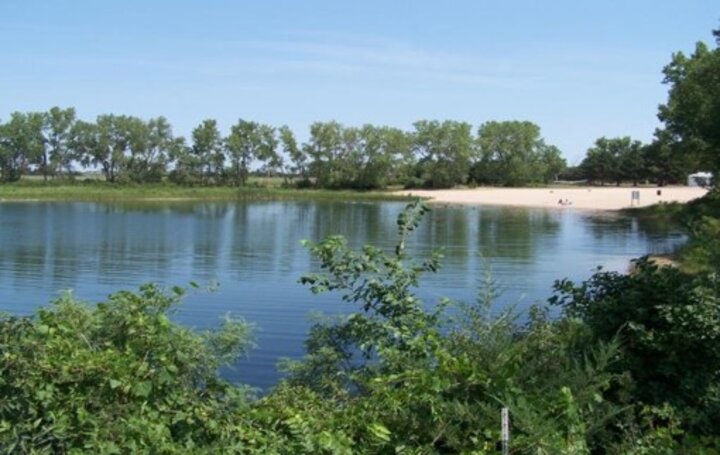Sandpit Lake Basics – Where does the water come from?

Lakes are classified in a number of ways to help us understand how they function, make predictions, assess ecosystem health, and establish management strategies or regulations. They are most commonly classified by the lake’s ability to support plant and animal life, or productivity. They can also be classified based on the water supply, how humans use them, plant and animal communities, or how they were formed (e.g. glacier retreating, volcanic eruption, made by man).
One of the most common lake types in Nebraska is a sandpit lake. These lakes are created as a result of the mining of sand and gravel for use in other projects – most often for a road base. When the sand and gravel is mined below the water table of the groundwater, it creates a sandpit lake.

Where does the water come from? Water Source
The water source for sandpit lakes is primarily groundwater. There is very little rainwater that lands in the watershed and runs off into the sandpit lake, except during a flood event. Usually, watershed runoff contributions only come from the immediate shoreline area with a limited amount of surrounding land which may include housing around the sandpit lake.
Nearby rivers or streams can also influence the water level, even when there is not flooding. This happens because there is a strong connection between the river and groundwater level near the stream, thus making the connection with the lake strong as well.

Sandpit Physical Features
The physical features of a sandpit lake are strongly influenced by man-made activities during excavation of the lake, but also have natural influences. Generally, sandpits have steep banks with quick changes in depth. This means that most sandpits are relatively deep and have a comparatively small amount of shallow waters.
Sandpit lakes’ bottom and shoreline areas are mostly made of, what else? Sand. This can make the bottom and shoreline areas of the lake unstable - resulting in sloughing and highly susceptible to winds that often result in waves eroding shoreline areas. It also means that the lake is generally unproductive for growing vegetation, which can often stabilize shoreline areas of other types of lakes and provide many benefits for fish and other aquatic organisms.

More Information
Do you need some technical assistance with your sandpit lake? Contact your area Fisheries Biologists or the Private Waters Specialist for further information. You can also find resources with your local UNL Extension Agent, the Nebraska Department of Environmental Quality, and Private Consulting Firms.
This article was reviewed by Jeff Blaser, Nebraska Game and Parks